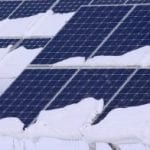Samsonite801
Solar Wizard
- Joined
- Oct 15, 2020
- Messages
- 2,994
Ah, yes, I need to re-orient my thinking that way. So, essentially, the Battery Chargers is a load that will pull max 18A from PV? Then depending on my settings/priorities, the PV can/will power the house load as well, so long as there's enough power available?
MPPT sweeping, is how it does it, through varying the resistance on the PV circuit. When it fully releases the circuit, it let's the PV circuit go fully open, and voltage is high, amps is low (zero), to perform an MPPT sweep, it lowers the resistance on the circuit (for a brief sweep), which pulls the voltage down (gradually, as it scans), and the amperage on the PV circuit climbs, they do these MPPT sweeps every so often (on a schedule) in order to locate maximum power point in watts.
It can only load down the PV circuit until it reaches its max amp rating, and so the PV circuit will not 'pull' the voltage down beyond its max amps capability.
If no battery charging is needed and no demand on the inverter (so battery stays at full), then it will just fully release the PV circuit. If a demand is applied, or battery gets low, it will pull down the resistance on the PV circuit and get the battery charger going (regulating the charging amps via the PV load applied).
Last edited:






